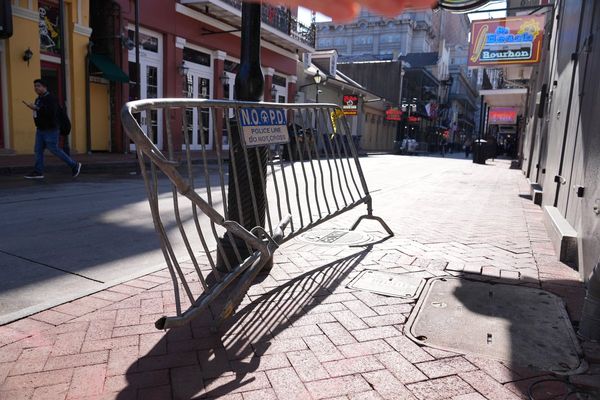The Australian Grand Prix is back.
Formula 1 returns to Melbourne for the first time since 2019 for round three of the championship.
The circuit at Albert Park has gone through a $20 million upgrade that aims to produce great racing battles.
As the world's best drivers become acquainted with Melbourne again, here is everything you need to know about this weekend's grand prix.
New-look track creates overtaking opportunities
The Albert Park circuit has been upgraded since the last grand prix with an emphasis on designing a track that will encourage overtaking.
The most notable change to the circuit is the removal of the Clark chicane, which used to be turns nine and 10.
Drivers used to accelerate through the sweeping turn 8 and brake hard for the chicane, before heading down the back of the course.
The removal of the chicane means drivers will be able to put their foot to the floor along the lake before navigating the fast left-right chicane (now turns nine and 10) and then onto the back straight.
There have also been five corners that have been widened, hopefully allowing for more overtaking.
The most notable of these is turn six, which is now 7.5 metres wider than it was three years ago.
"I think they will make quite a big difference, especially in turn six where the most significant change has happened," world champion Max Verstappen said.
"There should be more overtaking opportunities now too, which is always positive."
The track has also been resurfaced for the first time since the grand prix was first held in Melbourne in 1996.
Australian Grand Prix sets record for DRS zones
For the first time in F1 history, a race track will feature four DRS zones.
DRS, the drag reduction system, is a mechanism where a driver can open their rear wing to go quicker.
A driver can only use DRS if they are within a second of the car in front and they are in a designated zone.
There have been three DRS zones in each of the opening two races this season, but the Australian Grand Prix will have four zones.
After Verstappen and Ferrari driver Charles Leclerc both used the DRS zones strategically in the opening races this season, four zones should create tactical racing on Sunday.
Why were the changes necessary?
The Albert Park circuit was effectively unchanged since hosting its first race in 1996.
However, changes to the cars had made the track no longer fit for purpose.
F1 cars were considerably smaller in 1996, meaning there was still plenty of overtaking on the narrow circuit.
But as cars became wider the number of passing opportunities reduced.
Complexities with the aerodynamics of an F1 car, creating turbulent air for trailing cars, also meant drivers could not get close enough to a rival to attempt an overtake.
The wider corners and the removal of the Clark chicane aims to address these problems and give fans more of a spectacle.
"I think by changing some of these apexes, creating a little bit more of a wider apex, allowing more room to make a diving overtake or even just change your line to get out of the dirty air, I think that will help," Daniel Ricciardo said during an interview posted by the Australian Grand Prix Corporation.
Speed on Saturday does not guarantee victory on Sunday
While previous races have not had as many overtakes as fans would like, it did not mean pole position led to victory.
Actually, only once in the past eight races in Melbourne has the pole sitter gone on to win the race — Lewis Hamilton in 2015.
Hamilton has been on pole in seven of the last eight races in Melbourne, but it looks unlikely the Mercedes champion will be able to pull off the feat again.
Mercedes have been off the pace set by Ferrari and Red Bull in the opening two races of the season.
You can follow Sunday's F1 Australian Grand Prix on the ABC Sport live blog.







